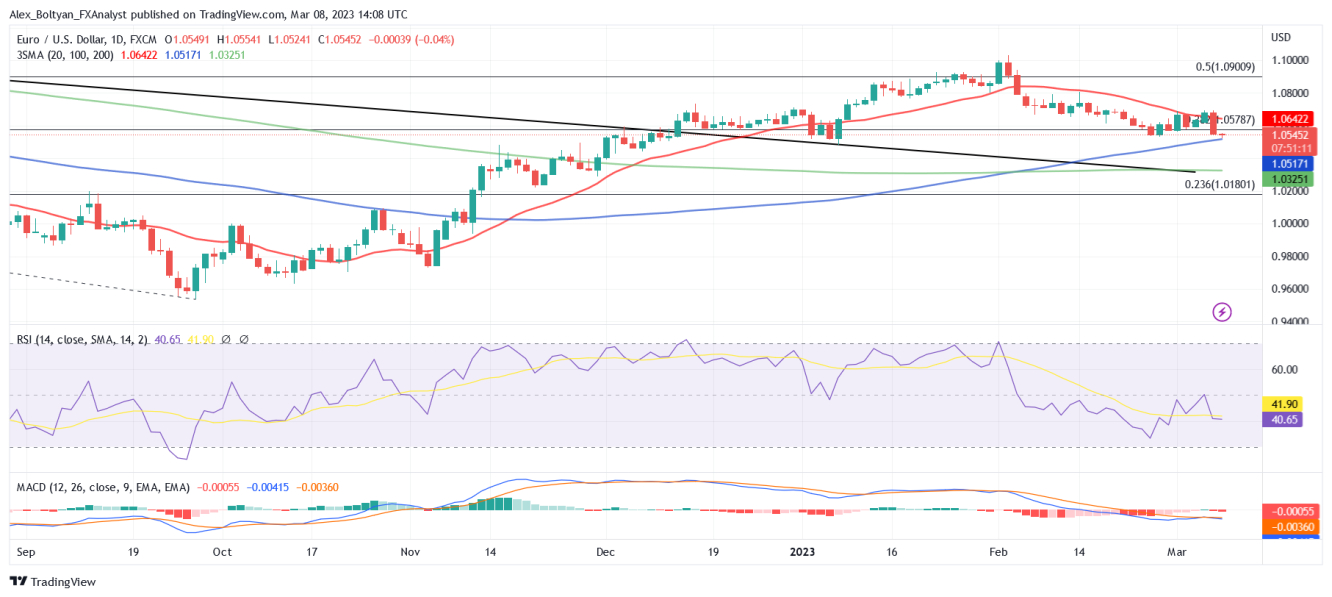The EUR/USD pair has managed to stabilize after the sharp sell-off suffered on Tuesday on the back of hawkish words from Federal Reserve Chairman before the U.S. Congress.
After hitting a two-month low of 1.0524, the EUR/USD pair found support at the 100-day Simple Moving Average (SMA) and recovered a few pips. At the time of writing, the pair is trading at the 1.0545 area, virtually unchanged since opening.
On Tuesday, Federal Reserve Chair Jerome Powell testified before the U.S. Senate and stated the FOMC is willing to accelerate the pace of rate increases given that macroeconomic figures have been better than expected. Still, inflation remains far above the Fed’s target of 2%. Powell will speak before the House of Representatives later in the session.
The hawkish message lifted expectations that the Fed might hike by 50 bps at the March 21, and 22 meetings, triggering a dollar rally and boosting short-term Treasury yields. The United States 2-Year rate reached a 15-year peak at 5.085% on Wednesday.
Meanwhile, ahead of the critical nonfarm payrolls employment report (Friday), ADP data showed the U.S. private sector added 242,000 new jobs in February, surpassing expectations of 200,000 increase. The strong job gains further fuel expectations that the central bank will act more aggressively this time.
From a technical perspective, the EUR/USD maintains a short-term bearish bias, according to indicators on the daily chart, with the RSI below its midline and the MACD printing higher red bars. At the same time, the price hovers below the 20-day SMA while threatening to break below the 100-day SMA.
Loss of the latter, currently around 1.0525, will risk a steeper decline targeting January lows at 1.0480. On the flip side, the immediate resistance area is seen at 1.0600, followed by the 20-day SMA at 1.0640 and the 1.0700 psychological level. A recovery of this hurdle could ease the immediate pressure on the euro.


